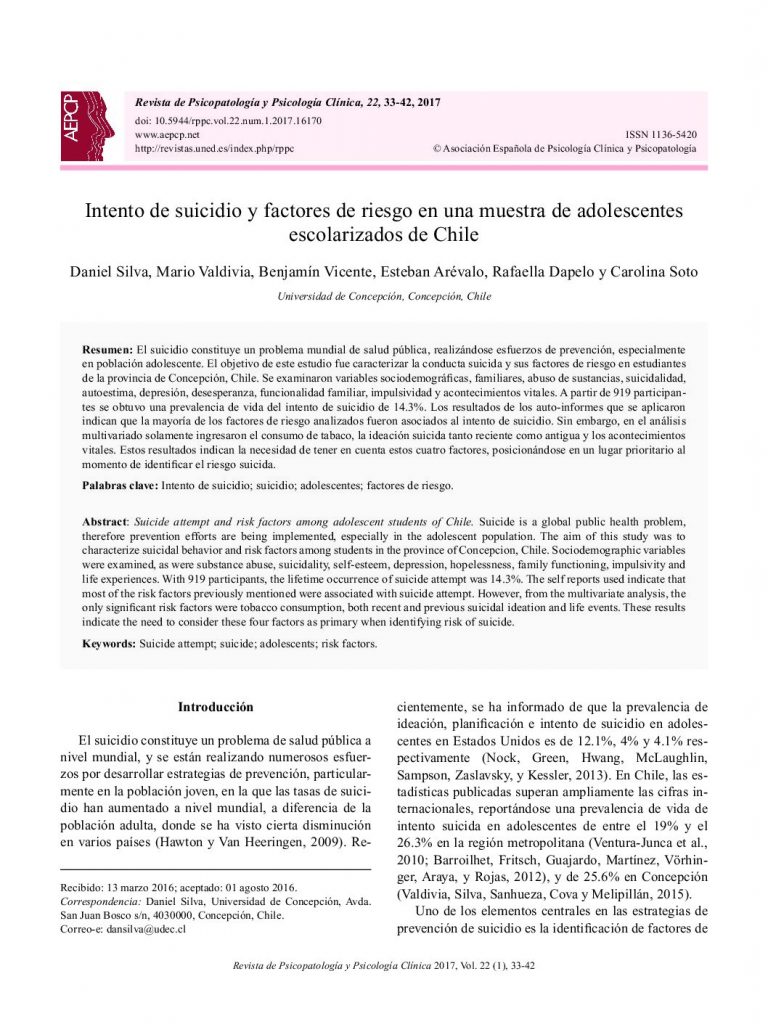Intento de suicidio y factores de riesgo en una muestra de adolescentes escolarizados de Chile.

- Resultados de un programa de tratamiento psicológico grupal para la enfermedad inflamatoria intestinal.
- La Escala de Encuentro de Beneficio para pacientes cardiacos.
- Estilos de afrontamiento y generación de estrés interpersonal en adolescentes.
- Intento de suicidio y factores de riesgo en una muestra de adolescentes escolarizados de Chile.
- Dimensionality and psychometric properties of the Spanish version of the Mechanisms of Moral Disengagement Scale (MMDS-S).
- Adaptación al castellano de la Escala DS-14 («Type D Scale-14») para la medida de la personalidad tipo D.
- El trastorno dismórfico corporal: Un problema infra-diagnosticado.
Suicide is a global public health problem, therefore prevention efforts are being implemented, especially in the adolescent population. The aim of this study was to characterize suicidal behavior and risk factors among students in the province of Concepcion, Chile. Sociodemographic variables were examined, as were substance abuse, suicidality, self-esteem, depression, hopelessness, family functioning, impulsivity and life experiences. With 919 participants, the lifetime occurrence of suicide attempt was 14.3%. The self reports used indicate that most of the risk factors previously mentioned were associated with suicide attempt. However, from the multivariate analysis, the only significant risk factors were tobacco consumption, both recent and previous suicidal ideation and life events. These results indicate the need to consider these four factors as primary when identifying risk of suicide.
El suicidio constituye un problema mundial de salud pública, realizándose esfuerzos de prevención, especialmente en población adolescente. El objetivo de este estudio fue caracterizar la conducta suicida y sus factores de riesgo en estudiantes de la provincia de Concepción, Chile. Se examinaron variables sociodemográficas, familiares, abuso de sustancias, suicidalidad, autoestima, depresión, desesperanza, funcionalidad familiar, impulsividad y acontecimientos vitales. A partir de 919 participantes se obtuvo una prevalencia de vida del intento de suicidio de 14.3%. Los resultados de los auto-informes que se aplicaron indican que la mayoría de los factores de riesgo analizados fueron asociados al intento de suicidio. Sin embargo, en el análisis multivariado solamente ingresaron el consumo de tabaco, la ideación suicida tanto reciente como antigua y los acontecimientos vitales. Estos resultados indican la necesidad de tener en cuenta estos cuatro factores, posicionándose en un lugar prioritario al momento de identificar el riesgo suicida.



